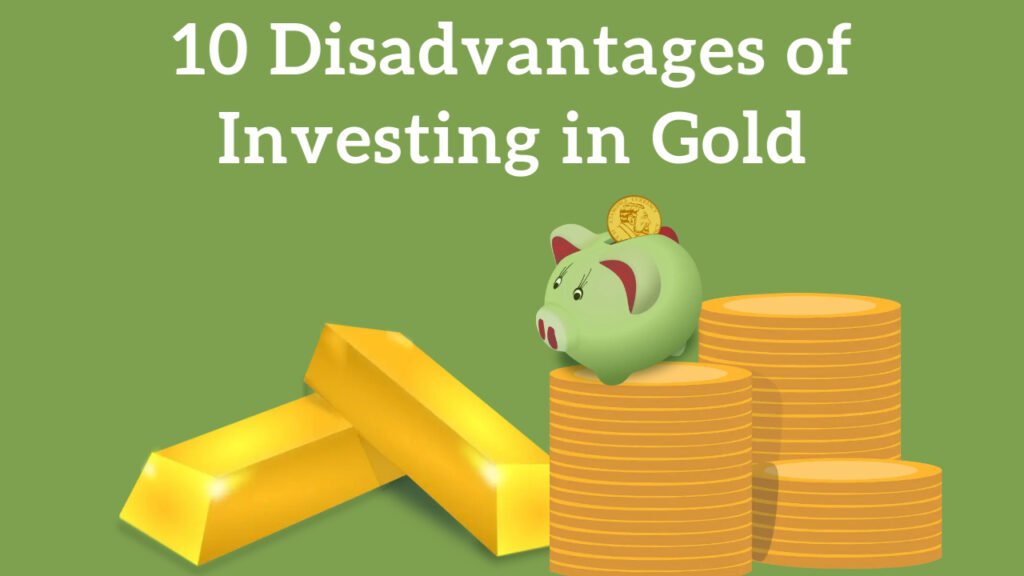
When people think of safe investments, gold is often the first thing that comes to mind. For centuries, gold has been regarded as a safe-haven asset, particularly during periods of economic uncertainty. Whether it’s the fear of inflation, crashing stock markets, or political instability, investors have traditionally turned to gold to protect their wealth. In fact, according to the World Gold Council, global gold demand surged to 4,899 tonnes in 2022, its highest level in over a decade. And this upward trend has only continued into 2025, driven by rising inflation, geopolitical tensions, and growing fears of a global recession.
With the dollar losing purchasing power and central banks buying up gold reserves at record rates, many everyday investors are rushing to follow suit. Google searches for “how to invest in gold safely” and “should I buy gold in 2025” have reached all-time highs. It’s clear that gold is enjoying a revival. But amid the hype, one thing often gets lost in the noise the real disadvantages of investing in gold.
While gold can offer some stability, it’s not the golden ticket many believe it to be. The truth is, there are serious downsides to gold investing that people rarely talk about. From lack of income generation to price volatility and storage issues, gold can be a tricky asset if you’re not careful. And in today’s fast-moving financial world, with digital assets, high-yield savings, and tech stocks outperforming traditional commodities, it’s more important than ever to question the hype.
The purpose of this guide is simple: to explore the less talked-about side of gold investment. If you’re thinking about buying gold in 2025, or already have, this article will give you the clear-eyed, no-fluff truth about the potential pitfalls. You deserve to make smart, informed decisions about your money—not just follow what’s trending.
So before you sink your savings into shiny metal bars or gold-backed ETFs, let’s take a closer look at why investing in gold may not be as safe—or as smart—as it seems.
10 Disadvantages of Investing in Gold

Lack of Income Generation
One of the biggest and most overlooked disadvantages of investing in gold is that it doesn’t produce any income. Unlike stocks that pay dividends, or bonds that offer interest payments, gold just sits there. It doesn’t grow. It doesn’t pay you. It doesn’t work for you. And in 2025 when more investors are focused on cash flow, passive income, and returns on capital this flaw is hard to ignore.
In today’s financial landscape, income-generating assets are king. With interest rates still hovering around 5.25% in the U.S. (Federal Reserve, May 2025 update), putting your money into a high-yield savings account, dividend-paying stocks, or rental property means you’re earning while you sleep. But when you buy gold, you’re not earning you are waiting and hoping for the price to rise.
If you invested $10,000 in gold last year. Fast forward to today, and unless the price of gold has surged, your investment has just been sitting idle. Now compare that to putting the same amount into an S&P 500 dividend ETF with an average yield of 1.7% or into government bonds yielding over 4% annually. Not only would you have preserved your capital, but you’d also have earned consistent income.
This is especially important in high-interest environments like we’re seeing in 2025. As central banks tighten policy to combat inflation, income-focused investors are being rewarded with better yields across multiple asset classes. Gold, on the other hand, becomes less attractive. Why? Because it offers zero yield and comes with opportunity cost you’re losing out on what you could be earning elsewhere.
Even real estate outperforms gold in terms of income. Despite higher mortgage rates, property investors can still collect monthly rental income, benefit from tax advantages, and build equity over time. Gold does none of that. It doesn’t generate cash flow, and it doesn’t compound in value unless the market pushes its price up and that’s not guaranteed.
If your goal in 2025 is to build wealth through passive income, gold is not your friend. It’s a static asset in a world where smart money is chasing yield. And unless you’re a central bank or a hedge fund looking for diversification, the average investor might be better off putting their capital to work elsewhere.
High Storage and Security Costs
Investing in physical gold comes with serious storage and security expenses. You cannot just stash gold bars under your bed it requires secure vaults, insurance, and tight safety measures, all of which eat into your profits. Even in 2025, with the rise of smart vault technologies, secure storage remains expensive and out of reach for everyday investors. Think digital gold is cheaper? Not always. Gold ETFs and app-based platforms often charge management fees, premium markups, and hidden costs that quietly drain returns. In the end, owning gold is far from free it comes at a cost most overlook.
Price Volatility and Speculative Risk
Despite its reputation as a “safe-haven,” gold is far from stable. From 2020 to 2025, gold prices have swung wildly from under $1,500/oz in early 2020 to over $2,400/oz in 2024, and back down due to shifting interest rates, U.S. dollar strength, and global conflicts. Wars, inflation spikes, and central bank policy all make gold extremely price-sensitive.
On top of that, gold markets are often influenced by speculation, investor panic, and even manipulation. In fact, there have been repeated allegations of price rigging by major banks, affecting trust and stability. Unlike dividend-paying stocks or cash-flowing real estate, gold offers no cushion during downturns just price swings.
In 2025 fast-paced and uncertain market, buying gold means betting on emotion and sentiment, not fundamentals. If you’re looking for predictability and long-term growth, gold may expose you to more risk than reward.
Poor Performance in Economic Booms
While gold shines in crisis, it often underperforms during economic booms. In strong equity bull markets like the post-AI boom of 2023–2025 gold lagged behind as tech stocks, AI-driven ETFs, and even cryptocurrencies delivered explosive returns.
During this period, the S&P 500 surged over 20%, AI ETFs doubled in value, and leading digital assets saw triple-digit gains. Meanwhile, gold remained mostly flat, failing to capture the upside. The truth? When economies grow and innovation accelerates, investors favor growth assets, not static commodities.
Holding gold in a booming market means facing a serious opportunity cost. Every dollar sitting in gold could have been compounding in dynamic sectors. In 2025’s innovation-fueled economy, where technology and digital finance lead the charge, gold feels more like a relic than a smart investment. If you’re aiming to build real wealth, gold may leave you behind.
Liquidity Challenges
Although gold is often praised for being a liquid asset, physical gold can be surprisingly hard to sell quickly, especially if you live outside major cities or in rural areas. Finding trustworthy buyers, negotiating prices, and dealing with premiums and wide bid-ask spreads on coins or bars can delay sales and reduce your returns.
In 2025, this contrasts sharply with digital investments like cryptocurrencies and stocks, which can be bought or sold instantly on global platforms 24/7. Crypto markets offer near-immediate liquidity with minimal transaction costs, while gold transactions often involve paperwork, verification, and shipping logistics.
For investors needing quick access to cash, gold’s liquidity limitations can become a frustrating hurdle. While it may seem like a safe asset, gold’s real-world sell ability isn’t as convenient as many believe, especially compared to the fluidity of modern digital financial markets.
Regulatory and Taxation Risks
Investing in gold comes with its own set of regulatory and taxation challenges that many overlook. In 2024 and 2025, several countries have tightened import and export taxes on physical gold, making cross-border transactions more expensive and complicated for investors.
On the tax front, gold often faces higher capital gains taxes compared to stocks or mutual funds, depending on your jurisdiction. Unlike long-term stock investments that might benefit from preferential tax rates, gold profits can be taxed as collectibles at a steeper rate. Additionally, the global crackdown on financial crimes means stricter reporting requirements under 2025’s enhanced anti-money laundering (AML) regulations. Gold dealers and investors now face increased scrutiny, with more paperwork and transparency demands.
These regulatory and taxation risks add layers of complexity and cost, making gold investing less straightforward and potentially less profitable than many realize.
Geopolitical and Environmental Concerns
Gold mining has long been linked to serious geopolitical and environmental problems. Issues like child labor, pollution, and deforestation plague many gold-producing regions, raising ethical questions for investors. In 2025, these concerns are driving more ESG-conscious (Environmental, Social, and Governance) investors to move away from gold and toward cleaner, more sustainable assets.
With the rise of green and sustainable investing as a dominant trend this year, gold is facing growing criticism for its environmental footprint. Unlike renewable energy stocks or green bonds, gold mining contributes heavily to carbon emissions and habitat destruction.
As investors prioritize sustainability, gold struggles to fit into modern portfolios focused on responsible investing. If you care about your impact on the planet, gold may not be the “safe” or “pure” investment it’s often made out to be in 2025’s environmentally aware market.
Technological Disruption of Traditional Safe Havens
In 2025, gold’s role as a traditional safe haven is being challenged by rapid technological innovation. The rise of tokenized assets and central bank digital currencies (CBDCs) is reshaping how investors protect their wealth. These digital alternatives offer greater liquidity, transparency, and ease of use compared to cumbersome physical gold. Demand for gold as an inflation hedge is declining because more dynamic and flexible tools are available. Advanced AI-driven financial platforms now provide real-time inflation hedging strategies that adjust automatically to market changes something gold simply can’t do.
With the financial world becoming increasingly digital and tech-driven, gold risks losing ground to smarter, faster, and more efficient options. For investors in 2025 seeking modern wealth protection, traditional gold may no longer be the first or best choice.
Storage Risk in Digital Gold Platforms
App-based gold investing through platforms like Robinhood, Revolut, and Paytm has soared in popularity in 2025, offering easy access to gold without handling physical bars or coins. However, this convenience comes with significant storage risks. Many of these platforms don’t provide full physical backing for your gold holdings, meaning your “gold” might exist only as a digital entry. Worse, if the platform faces insolvency, bankruptcy, or hacking incidents as seen in several high-profile 2025 cases investors could lose their entire investment.
Unlike owning physical gold stored in vaults, digital gold depends heavily on the platform’s security and trustworthiness. As a result, user mistrust is growing, and experts warn that the risks of storing gold digitally are often underestimated in today’s rush for easy investing.
Behavioral Finance: Gold and Emotional Investing
Gold has long been seen as an emotional “safety blanket” for investors during uncertain times. In 2025, this emotional attachment remains strong, with many turning to gold out of fear and anxiety rather than clear, data-driven analysis. But relying on gold because it feels safe can lead to poor investment decisions. Fear-driven buying often results in chasing price spikes or holding gold through downturns, missing better growth opportunities in stocks, crypto, or AI-driven assets.
Investor psychology in 2025 shows a clear trend: many fall into narrative traps, believing gold is the ultimate shield against economic chaos. While gold can play a role in diversification, letting emotions guide your investment choices often means sacrificing returns and increasing risk. Understanding this behavioral bias is key to smarter investing in today’s complex markets.
Real-Life Case Studies: Investors Who Lost Money in Gold (2020–2024)

Despite gold’s reputation as a safe haven, several investors faced significant losses between 2020 and 2024. Take James Parker, a retired teacher from Ohio, who bought physical gold at nearly $2,000 per ounce in mid-2020 amid pandemic fears. By late 2022, gold prices had dropped below $1,700, leaving him with a 15% loss when he needed to sell urgently for medical bills.
Another example is Priya Sharma, a tech professional from London, who invested in a popular gold ETF in early 2021. Due to rising interest rates and a strong dollar in 2023, the ETF value declined by 12% over 18 months, eroding her portfolio’s gains.
In 2024, Carlos Mendes, a Brazilian investor, suffered when a digital gold platform he used was hacked, resulting in a loss of nearly $25,000. These real-world stories highlight how even seemingly “safe” gold investments carry risks that can hurt everyday investors.
Comparison Gold vs. Stocks vs. Crypto (5-year comparative ROI)
| Investment Type | Average 5-Year ROI (2020–2025) | Key Factors Influencing Returns | Risk Level | Liquidity |
| Gold | +15% | Inflation fears, geopolitical tensions, market volatility | Moderate | Moderate (physical storage limits) |
| Stocks (S&P 500) | +70% | Economic growth, corporate earnings, AI/tech boom | Moderate to High | High (traded daily on exchanges) |
| Cryptocurrency | +250% (highly variable) | Market hype, innovation cycles, regulatory shifts | Very High | Very High (24/7 digital markets) |
Conclusion: Is Gold Still Worth It in 2025? Think Twice Before You Buy
In 2025, gold may not be the golden ticket many investors still believe it is. While it’s long been seen as a safe haven, this reputation doesn’t always match reality. From lack of income generation and high storage/security costs to price volatility, liquidity challenges, and emerging technological alternatives, the disadvantages of investing in gold are growing harder to ignore.
Real-life stories of loss, shifting investor psychology, and ESG concerns reveal how gold’s glow can fade under pressure. Meanwhile, AI-driven tools, cryptocurrencies, and high-growth tech stocks are offering more responsive and profitable options in a fast-changing world.
That doesn’t mean gold has no place in a portfolio it can still be a diversification tool, especially in times of economic uncertainty. But before investing, ask yourself: is it logic or fear driving your decision? In 2025, smart investors are thinking beyond tradition and it’s paying off.
FAQ’s
Is gold still a good hedge against inflation in 2025?
Gold is traditionally seen as an inflation hedge, but in 2025, AI-powered financial tools, real estate, and tokenized assets have proven to be more responsive and profitable during inflationary periods. Gold’s performance has been inconsistent, especially during rate hikes.
Why doesn’t gold generate income like stocks or real estate?
Unlike dividend-paying stocks or rental properties, gold doesn’t produce cash flow. It only appreciates in value if the market price rises meaning you rely purely on capital gains, which aren’t guaranteed.
How risky are digital gold platforms in 2025?
Digital gold platforms carry storage risk, platform insolvency, and hacking vulnerabilities. In 2025, multiple platforms faced outages or breaches, causing major trust issues and financial losses for users.
Is gold a safe long-term investment?
Gold is relatively stable in times of crisis but often underperforms in economic booms or tech-driven bull markets. Over the long term, stocks and diversified ETFs tend to yield higher returns.
What are the hidden costs of owning gold?
Physical gold comes with vault fees, insurance costs, and security expenses, while ETFs may include management fees and spreads. These reduce overall returns especially in low-growth periods.
How does gold compare to crypto in 2025?
Crypto assets offer higher potential returns and greater liquidity, but also come with high volatility. Gold is less volatile but also delivers much lower returns, making it a less attractive option for growth-oriented investors in 2025.
Are there tax disadvantages to investing in gold?
Yes. In many countries, gold is taxed at a higher capital gains rate than stocks and may be subject to import/export duties and new AML (anti-money laundering) reporting laws introduced in 2025.
What role should gold play in my portfolio today?
Experts recommend gold as a minor hedge, not a core asset. Keeping 5–10% of your portfolio in gold might add some stability but relying heavily on it could limit your wealth-building potential.
Read More Related Articles:
https://growmest.com/etfs-or-stocks-in-2025-a-beginners-guide/
https://growmest.com/how-to-invest-100-in-2025-building-wealth/
https://growmest.com/best-discover-secured-credit-card-2025/
https://growmest.com/can-you-buy-a-car-with-a-credit-card-in-2025/
https://growmest.com/7-genius-student-money-saving-tips/
https://growmest.com/best-side-hustles-for-women-to-make-money-from-home/

Thanks for shedding light on the potential pitfalls of gold investment! It’s crucial to consider all aspects before making a decision.Thanks Dude!
Gold might not be as shiny as it seems! Price volatility and storage costs can be a real pain.Investing in gold requires careful consideration. This article highlights some important factors to keep in mind.Thanks for sharing!